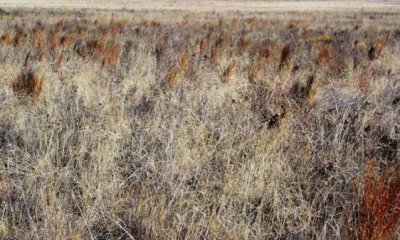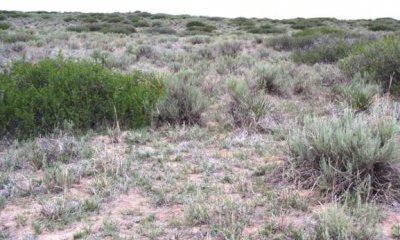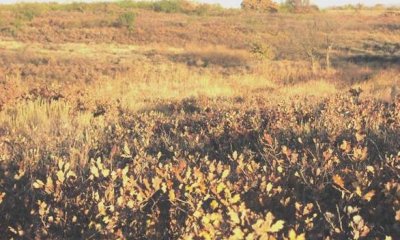
Sandy 16-21" PZ
Scenario model
Current ecosystem state
Select a state
Management practices/drivers
Select a transition or restoration pathway
-
Transition T1A
Absence of disturbance and natural regeneration over time, may be coupled with excessive grazing pressure
More details -
Restoration pathway R2A
Adequate rest from defoliation, followed by reintroduction of historic disturbance regimes
More details -
Transition T2A
Absence of disturbance and natural regeneration over time, may be coupled with excessive grazing pressure
More details -
Restoration pathway R3A
Adequate rest from defoliation and removal of woody canopy
More details -
No transition or restoration pathway between the selected states has been described
Target ecosystem state
Select a state
Description
The Tallgrass Grassland State is a mixture of tall/midgrasses, forbs, and a few woody shrubs. The major tallgrass species are sand bluestem and little bluestem. The midgrasses are sideoats grama, sand lovegrass, sand paspalum, fall witchgrass, hairy grama, dropseed species, perennial three-awns, and hooded windmillgrass. Cool-season grasses include needle & thread. Perennial forbs are present and a few scattered shrubs such as sand sagebrush, sand shinoak, skunkbush and an occasional sand plum thicket and southwest rabbitbrush.
Submodel
Description
The midgrass/shrub community is dominated by sand sagebrush and skunkbush increasing (>20%) with an occasional yucca plants. The main grasses are sideoats grama, dropseeds, and sand paspalum with increasing amounts of perennial three-awns. Annual forbs and grasses are increasing along with bare ground; production potential reduced.
Submodel
Description
The sand shinoak and sand sagebrush dominates this Shrub Dominant Community. The understory is primarily annual grasses and forbs with a high percentage of bare ground. Very few perennial grasses are remaining. This community has very low production potential.
Submodel
Mechanism
With heavy continuous grazing, no fires, and woody encroachment of shrubs, the Tallgrass/Midgrass Community will shift to the Midgrass/Shrub Community.
Mechanism
In the Midgrass/Shrub Community (2.1), the transition back to the reference community is possible with proper grazing management, brush and pest management. Prescribed burning could be used if the conditions allow.
Relevant conservation practices
| Practice | External resources |
|---|---|
|
Brush Management |
|
|
Integrated Pest Management (IPM) |
|
|
Prescribed Grazing |
Mechanism
Due to heavy continuous grazing, no brush management, and no fires, the Midgrass/Shrub Community will transition to the Shrub Dominant Community.
Mechanism
If even a small seed source of the tallgrasses remains and some old root crowns are still viable, then recovery is possible with minimal re-seeding. Recovery can occur fairly rapid if the competitive plants are controlled and proper grazing management is applied. Full recovery and maintenance of the reference community requires continued proper grazing management as well as occasional brush and pest management. This would allow the Shrub Dominant Community to be restored to the Midgrass/Grassland State.
Relevant conservation practices
| Practice | External resources |
|---|---|
|
Brush Management |
|
|
Integrated Pest Management (IPM) |
|
|
Prescribed Grazing |
Model keys
Briefcase
Add ecological sites and Major Land Resource Areas to your briefcase by clicking on the briefcase (![]() ) icon wherever it occurs. Drag and drop items to reorder. Cookies are used to store briefcase items between browsing sessions. Because of this, the number of items that can be added to your briefcase is limited, and briefcase items added on one device and browser cannot be accessed from another device or browser. Users who do not wish to place cookies on their devices should not use the briefcase tool. Briefcase cookies serve no other purpose than described here and are deleted whenever browsing history is cleared.
) icon wherever it occurs. Drag and drop items to reorder. Cookies are used to store briefcase items between browsing sessions. Because of this, the number of items that can be added to your briefcase is limited, and briefcase items added on one device and browser cannot be accessed from another device or browser. Users who do not wish to place cookies on their devices should not use the briefcase tool. Briefcase cookies serve no other purpose than described here and are deleted whenever browsing history is cleared.
Ecological sites
Major Land Resource Areas
The Ecosystem Dynamics Interpretive Tool is an information system framework developed by the USDA-ARS Jornada Experimental Range, USDA Natural Resources Conservation Service, and New Mexico State University.




